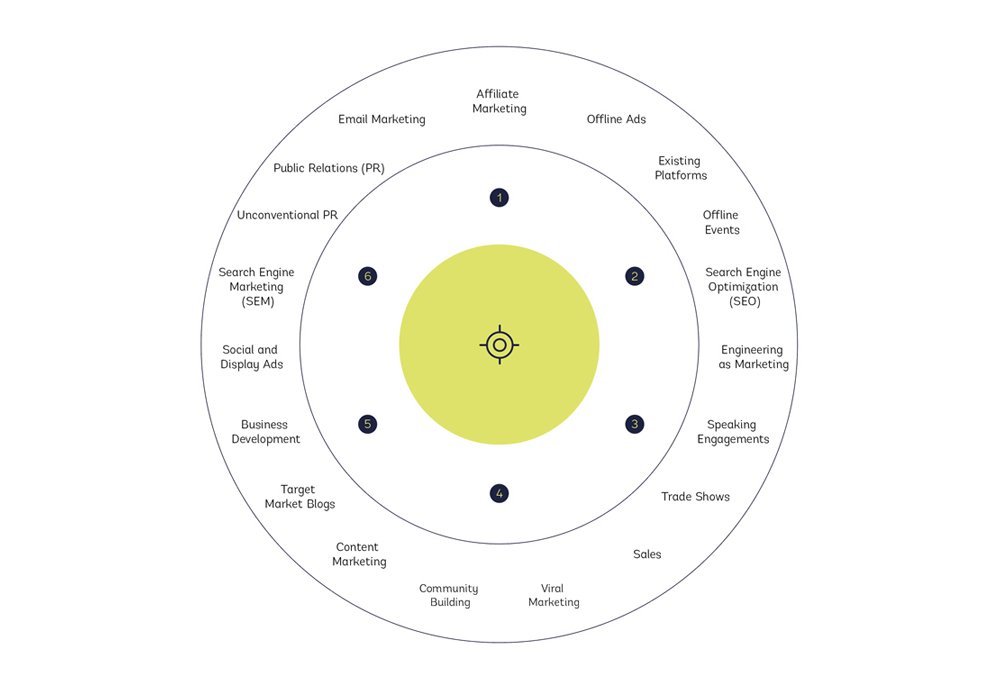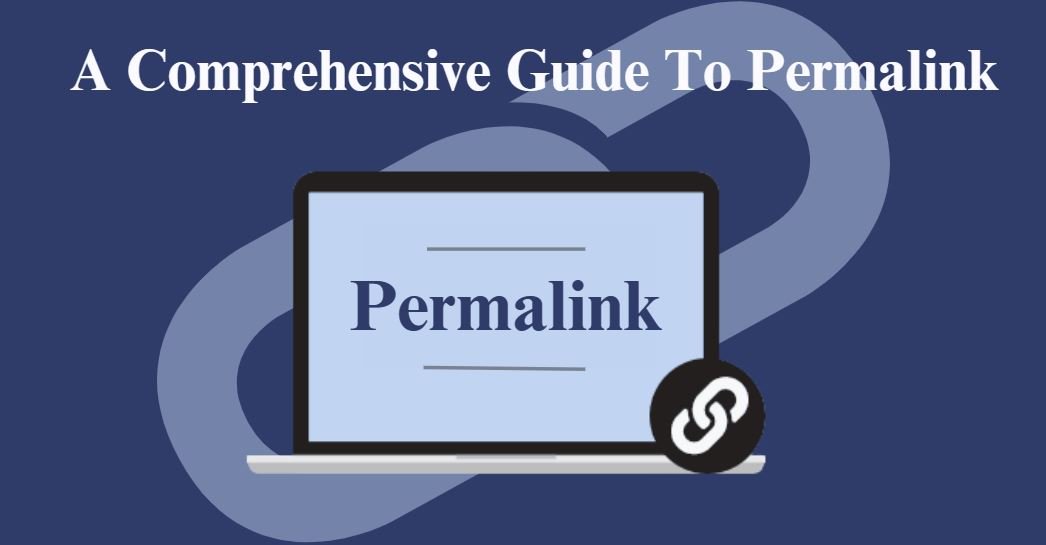The Traction Bullseye Framework by Gabriel Weinberg and Justin Mares in their book, Traction, is a simple, but effective process on how a startup team can focus in on the right channels for distribution resulting in a surge of customer acquisition. Here is a summary of key elements from their book.
Most businesses actually get zero distribution channels to work. Poor distribution— not product— is the number one cause of failure. If you can get even a single distribution channel to work, you have great business. If you try for several but don’t nail one, you’re finished. So it’s worth the time to do the needed research to find the single best distribution channels for a startup.
Using the Bullseye Framework to find your channel is a five-step process:

- Brainstorm – reasonable ways you might use each traction channel. Seek to counter your biases to find the most effective traction path for your startup. You should know what marketing strategies have worked in your industry , as well as the history of companies in your space . It’s especially important to understand how similar companies acquired customers over time, and how unsuccessful companies wasted marketing dollars. The Bullseye Spreadsheet is a great guide for this process.
- Rank – The ranking step helps you organize your brainstorming efforts. It also helps you start to think a bit more critically about the traction channels in aggregate.
Column A (Inner Circle): which traction channels seem most promising right now? Column B (Potential): which traction channels seem like they could possibly work? Column C (Long-shot): which traction channels seem like long-shots? - Prioritize – identify your inner circle: the three traction channels that seem most promising.
- Test – The testing step is where you put your ideas into the real world. The goal of this step is to find out which of the traction channels in your inner circle is worth giving focus. You want to design smaller scale tests that don’t require much upfront cost or effort. For example, run four Facebook ads vs. forty.
- Focus on what works – If all goes well, one of the traction channels you tested in your inner circle produced promising results. At any stage in a startup’s lifecycle, one traction channel dominates in terms of customer acquisition. As you dive deeper into it , you will uncover effective tactics and do everything you can to scale them until they are no effective due to rising cost or saturation.
Traction Thinking
The number one reason that investors pass on entrepreneurs they otherwise might back is their focus on the product to the exclusion of everything else. Many entrepreneurs who build great products simply don’t have a good distribution strategy. Even worse is when they insist that they don’t need one, or call [their] no distribution strategy a ‘viral marketing strategy.’”
Traction Thinking involves understanding these strategies that can be employ across each of the nineteen traction channels.

- 50% Rule – Traction and product development are of equal importance and should each get about half of your attention. This is what we call the 50% rule: spend 50% of your time on product and 50% on traction.
- Comparison to Lean – What Lean is to product development, Bullseye is to traction. With Lean, you figure out the right features to build. With Bullseye, you figure out the right traction channel to pursue.
- Moving the Needle – focusing on marketing activities that result in a measurable, significant impact on your company. From the perspective of getting traction, think about working on a product in three phases: Phase I – making something people want, Phase II – marketing something people want, Phase III – scaling your business. Some traction channels will move the needle early on, but will fail to work later. Startup growth happens in spurts . Initially, growth is usually slow. Then, it spikes as a useful traction channel is unlocked.
- To Pivot or Not to Pivot – Weinberg and Marse strongly believe that many startups give up way too early. A lot of startup success hinges on choosing a great market at the right time. The definition of traction keeps changing as the environment gets competitive. If you’re not seeing the traction you want, look for bright spots in your user base, pockets of users that are truly engaged with your product. See if you can figure out why it works for them and if you can expand from that base. If there are no bright spots, it may be a good time to pivot.
Traction Testing
Continuous testing is the key to getting traction with Bullseye, because all marketing channels become saturated. To combat this reality you should consistently conduct small experiments. Consistently running cheap tests will also allow you to discover new techniques with amazing results.
When trying to figure out what traction channel to focus on using Bullseye, you run cheap tests on the traction channels in your inner circle.
- How much does it cost to acquire customers through this channel strategy?
- How many customers are available through this channel strategy?
- How well do these customers convert? How long does it take to acquire a customer?
First tests in a channel are often very cheap: for instance, if you spend just $250 on AdWords, you’ll get a rough idea of how well the search engine marketing channel works for your business. Really focusing on a channel takes significant time and resources. Be sure to have your tracking system in place with a spreadsheet or another form of analytic, so you can be sure of your test results and comparisons.
An optimization can take place by using A/B testing, that in its most basic form is a science experiment with a control group (A ) and an experimental group (B). A/ B testing is often called split testing because for the best results you split people (randomly) into one of the two groups, and then measure what they do. Making A/ B testing a habit (even if you just run 1 test a week) will improve your efficiency in a traction channel by 2– 3x. These are just a few of the tools that test optimization without complex changes to your code; Optimizely, Visual Website Optimizer, and Unbounce.
Online analytics tools like Clicky, Google Analytics or Mixpanel tell you who is coming to your site, at what frequency, and, perhaps most importantly, when and where they are leaving your site.
Bullseye Spreadsheet will give you the spreadsheet that the authors created. Their columns include: Traction Channel/strategy/status 1-5/Test/How Promoting(1-5)/CAC(Cost to Acquire Customers)/Customer Availability/Timeframe/Good Customers (1-5)/Impressions/Response Rate/Conversion Rate/LTV
Defining your Critical Path is reaching your traction goal with the fewest number of steps.
- Always having a traction goal you’re working towards. An example could be 500 paying customers, 50 new daily users or 5% of your market.
- Define and order milestones to for a clear Critical Path. Work on the first steps and nothing else. After they are complete, re-assess your critical path using the market knowledge you just learned from achieving that milestone.
After laying the Bullseye Framework, the Traction book focuses on the defining and giving clear examples of 19 different traction channels that can be considered, tested and effectively used by startups.
Traction lays out a logical progression that any startup can follow to start testing and experimenting with new traction channels and hopefully find new sources of customers. “It’s so useful that at Zapier we’re using the Traction framework (which this post will outline soon) to guide our thinking around growth in 2015,” reports Nathaniel Eliason.
Resources
- Traction: A Startup Guide to Getting Customers by Gabriel Weinberg and Justin Mares
- Strategize, Test, Measure: The Bullseye Framework by Brian Balfour of CoElevate-Growth and User Acquisition
- 5 Steps To Choose Your Customer Acquisition Channel by Brian Balfour of CoElevate-Growth and User Acquisition
- The 50% Rule for Traction by Ash Maury
- How to Acquire Customers: 19 “Traction Channels to Start Testing Today” from Zapier’s blog
- Bullseye Framework for finding the best acquisition channels by Dave Chaffey A great
Note = We accept paid guest post , please let me know if you are interested. More details Ishantech@hotmailcom
http://ishanmishra.in/write-for-us-and-contribute-a-guest-post-for-our-growth-hacking-growth-marketing/

















